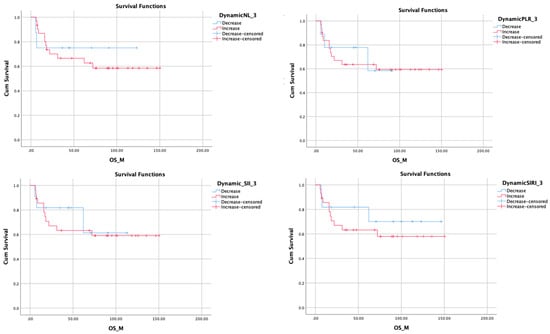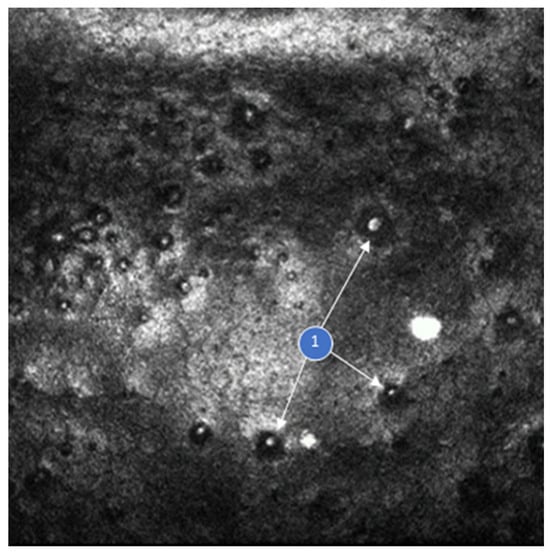Background/Objectives: A popliteal artery aneurysm (PAA) is traditionally treated by an open PAA repair (OPAR) with a popliteo–popliteal venous graft interposition. Although excellent outcomes have been reported in elective cases, the results are much worse in cases of emergency presentation or with the necessity of adjunct procedures. This study aimed to identify the risk factors that might decrease amputation-free survival (efficacy endpoint) and lower graft patency (technical endpoint).
Patients and Methods: A dual-center retrospective analysis was performed from 2000 to 2021 covering all consecutive PAA repairs stratified for elective vs. emergency repair, considering the patient (i.e., age and comorbidities), PAA (i.e., diameter and tibial runoff vessels), and procedural characteristics (i.e., procedure time, material, and bypass configuration). Descriptive, univariate, and multivariate statistics were used.
Results: In 316 patients (69.8 ± 10.5 years), 395 PAAs (mean diameter 31.9 ± 12.9 mm) were operated, 67 as an emergency procedure (6× rupture; 93.8% severe acute limb ischemia). The majority had OPAR (366 procedures). Emergency patients had worse pre- and postoperative tibial runoff, longer procedure times, and more complex reconstructions harboring a variety of adjunct procedures as well as more medical and surgical complications (all
p < 0.001). Overall, the in-hospital major amputation rate and mortality rate were 3.6% and 0.8%, respectively. The median follow-up was 49 months. Five-year primary and secondary patency rates were 80% and 94.7%. Patency for venous grafts outperformed alloplastic and composite reconstructions (
p < 0.001), but prolonged the average procedure time by 51.4 (24.3–78.6) min (
p < 0.001). Amputation-free survival was significantly better after elective procedures (
p < 0.001), but only during the early (in-hospital) phase. An increase in patient age and any medical complications were significant negative predictors, regardless of the aneurysm size.
Conclusions: A popliteo–popliteal vein interposition remains the gold standard for treatment despite a probably longer procedure time for both elective and emergency PAA repairs. To determine the most effective treatment strategies for older and probably frailer patients, factors such as the aneurysm size and the patient’s overall condition should be considered.
Full article
 IJMS
IMPACT
IJMS
IMPACT Applied Sciences
IMPACT
Applied Sciences
IMPACT Sustainability
IMPACT
Sustainability
IMPACT Sensors
IMPACT
Sensors
IMPACT JCM
IMPACT
JCM
IMPACT Materials
IMPACT
Materials
IMPACT Molecules
IMPACT
Molecules
IMPACT Energies
IMPACT
Energies
IMPACT Electronics
IMPACT
Electronics
IMPACT Remote Sensing
IMPACT
Remote Sensing
IMPACT Cancers
IMPACT
Cancers
IMPACT Nutrients
IMPACT
Nutrients
IMPACT Mathematics
IMPACT
Mathematics
IMPACT Foods
IMPACT
Foods
IMPACT Buildings
IMPACT
Buildings
IMPACT Polymers
IMPACT
Polymers
IMPACT Animals
IMPACT
Animals
IMPACT Water
IMPACT
Water
IMPACT Plants
IMPACT
Plants
IMPACT Agronomy
IMPACT
Agronomy
IMPACT Biomedicines
IMPACT
Biomedicines
IMPACT Processes
IMPACT
Processes
IMPACT Microorganisms
IMPACT
Microorganisms
IMPACT Diagnostics
IMPACT
Diagnostics
IMPACT Nanomaterials
IMPACT
Nanomaterials
IMPACT Viruses
IMPACT
Viruses
IMPACT Medicina
IMPACT
Medicina
IMPACT Healthcare
IMPACT
Healthcare
IMPACT Cells
IMPACT
Cells
IMPACT Forests
IMPACT
Forests
IMPACT Agriculture
IMPACT
Agriculture
IMPACT Land
IMPACT
Land
IMPACT JMSE
IMPACT
JMSE
IMPACT IJERPH
IJERPH
 Symmetry
IMPACT
Symmetry
IMPACT Genes
IMPACT
Genes
IMPACT Pharmaceutics
IMPACT
Pharmaceutics
IMPACT Coatings
IMPACT
Coatings
IMPACT Micromachines
IMPACT
Micromachines
IMPACT Pharmaceuticals
IMPACT
Pharmaceuticals
IMPACT Atmosphere
IMPACT
Atmosphere
IMPACT Children
IMPACT
Children
IMPACT Religions
IMPACT
Religions
IMPACT Antioxidants
IMPACT
Antioxidants
IMPACT Life
IMPACT
Life
IMPACT Metals
IMPACT
Metals
IMPACT Biomolecules
IMPACT
Biomolecules
IMPACT Vaccines
IMPACT
Vaccines
IMPACT Education Sciences
IMPACT
Education Sciences
IMPACT Minerals
IMPACT
Minerals
IMPACT Horticulturae
IMPACT
Horticulturae
IMPACT Brain Sciences
IMPACT
Brain Sciences
IMPACT JPM
IMPACT
JPM
IMPACT Bioengineering
IMPACT
Bioengineering
IMPACT


























